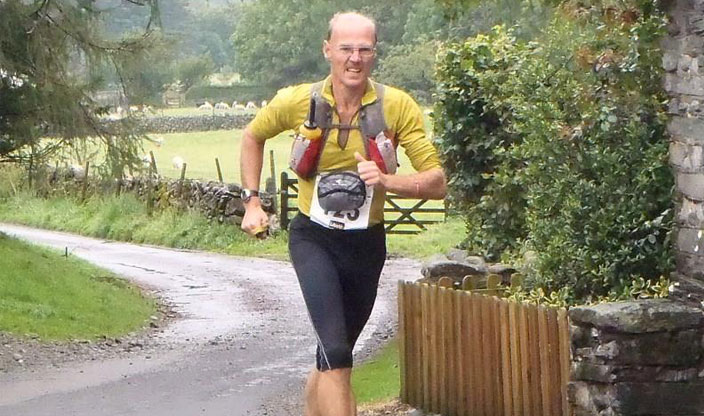Ed Sherstone is a quite remarkable individual. Having always had a passion for fitness and the outdoors, Ed’s type 1 diabetes diagnosis at the age of 16 didn’t slow him down a jot. He has since amassed an extraordinary profile of running and climbing achievements, including ice climbing on Ben Nevis.
Ed, now aged 52, spoke to Diabetes.co.uk about his most challenging excursions, both physically and related to his diabetes management, and how his rigorous schedule has affected his medication over the years.
“I have always loved the outdoors and the fitter I have become the more options I have had in climbing and running,” said Ed, whose penchant for exercise focuses on two activities: fell running and ice-climbing.
We didn’t know what those were either. But fell running, also known as hill running, involves running over upland country and requires some significant navigation skills. Ice-climbing is more or less what it sounds like, but requires the mastering of several rock-climbing techniques.
“My longest fell race was The Fellsman in the Yorkshire Dales, which is 61 miles long with 12,000 feet of ascent,” he said. “I have done this twice, with a best time of 19.5 hours.
“The toughest fell race was the 10Peaks Lakes race: a 49-mile, 18,000 ft ascent covering 12 summits in the Lake District, which I achieved in a time of 17 hrs 56 min. I finished 39 out of 96 starters.”
Years of training
At this point we should state that while running can be tremendously beneficial for people with diabetes, Ed is what you’d call an “advanced runner”. His achievements have resulted from decades of training and navigating diabetes management pitfalls.
Blood glucose levels are Ed’s primary concern. His management can be trickier in the days after a race when he develops higher blood sugar levels – he can solve this by increasing his basal rates on his insulin pump – but he insists his feats of exercise have been pivotal to improving his overall management.
Ed has had to make another key adjustment in recent years: his diet.
“My biggest change when I went on an insulin pump five years ago was my diet. Because I could use a temporary basal rate when exercising, I didn’t have to eat so much.
“I use to eat three king-size Mars bars on big days of ice climbing, like when I climbed Ben Nevis, but now I just eat a hand full of dates every hour or so.”
Ed is still going strong too. Alongside Dr Simon Tobin, who recently told us about the benefits that weekly parkrun sessions are having for people with diabetes, he attends parkrun most weeks, and continues to defy the myth that diabetes stops you from living your life how you want.
Well done, Ed!
Visit our Diabetes and Sport section for more information on managing blood sugar levels and diet during different types of exercise.
Picture: The La Sportiva Lake District Mountain Trial





